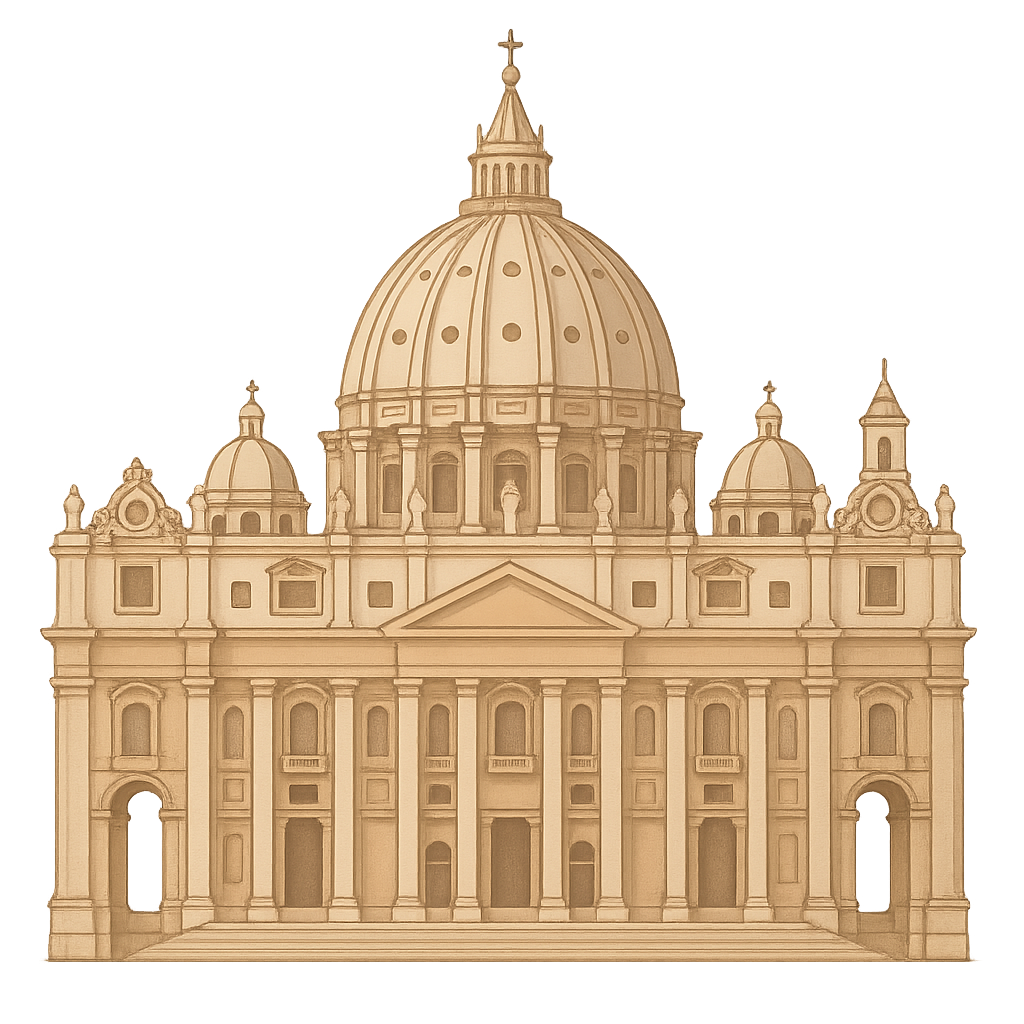The Story of Vatican City
I am a tiny country with a giant heart, tucked safely inside the beautiful city of Rome. Though I am the smallest country in the entire world, my spirit is grand. Within my walls, magnificent buildings stretch toward the heavens, and a giant dome looks out over the city like a watchful guardian. My gardens are peaceful places filled with green leaves and colorful flowers, and my halls are lined with some of the most incredible art ever created. Every day, I welcome visitors from every corner of the globe. They walk through my grand squares and gaze up at my painted ceilings with wonder in their eyes. They come to feel a sense of peace and to see history come alive. I am a place of faith, art, and history, and my name is Vatican City.
My story began long, long ago, even before I was a country. It started on a simple hill across the Tiber River from the busy center of ancient Rome. This place, known as Vatican Hill, wasn't always famous. But it became a sacred and holy place because it is believed that a very important follower of Jesus, named Saint Peter, was laid to rest here after his long journey. For centuries, people remembered this special spot. Then, in the year 326 CE, a powerful Roman emperor named Constantine decided to honor it. He ordered a huge and beautiful church to be built right over the place where Saint Peter was believed to be buried. This grand church was called Old St. Peter's Basilica, and for over a thousand years, it stood as a center of faith and pilgrimage for people from all over the world.
After standing for a thousand years, the old church grew tired and worn. It was time for a new beginning. In 1506, a grand project began to build a new church, one that would be even more spectacular than the first. I watched as the most brilliant minds of the time came to shape me. An architect named Donato Bramante imagined my new form, and another genius, Gian Lorenzo Bernini, later designed my enormous, welcoming square with its soaring columns that reach out like loving arms. But perhaps the most famous of all was the incredible artist Michelangelo. He designed my breathtaking dome, a masterpiece of engineering that still seems to touch the clouds. He also took on a nearly impossible task. Between the years 1508 and 1512, he spent countless hours painting the ceiling of my Sistine Chapel. Lying on his back on high scaffolding, he filled the curved space with powerful stories from the Bible, creating a work of art that still makes people gasp in awe today.
For a very long time, the leaders of the Catholic Church, known as the Popes, ruled over large areas of land in Italy. But as history unfolded, things began to change. Wars were fought, and kingdoms rose and fell. Eventually, a new chapter in my story needed to be written to ensure I could remain a place of peace and spirit. On a very important day, February 11, 1929, an agreement called the Lateran Treaty was signed between Italy and the Church. This treaty was my official birthday present. It declared me to be Vatican City, the world's smallest independent country. I became a sovereign and protected place, where the Pope could lead the Catholic Church without interference. To keep me safe, I have my own special protectors, the Swiss Guard, who are famous for their colorful and historic uniforms.
Today, I stand as a beacon of hope and history in a busy, modern world. I am more than just a collection of buildings; I am a living museum and a place of deep meaning. My museums are filled with priceless treasures collected over centuries, from ancient sculptures to beautiful tapestries. My libraries hold ancient books filled with wisdom and knowledge from the past. People from all different backgrounds and beliefs walk through my gates. They come to feel a sense of wonder in my grand basilica, to gaze up at Michelangelo's art, and to feel connected to the centuries of history that have unfolded here. I may be a tiny country, but I have a giant story, and I will always be here to remind everyone that beauty, faith, and history have the power to bring people together and inspire the whole world.
Reading Comprehension Questions
Click to see answer
